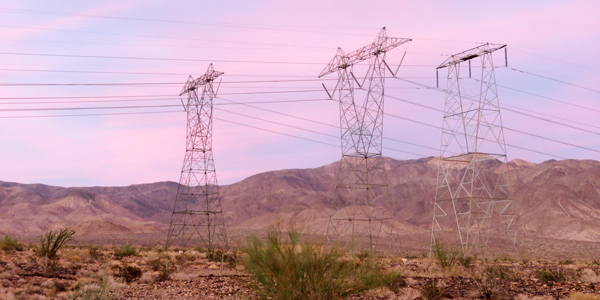By Jason Fordney
CAISO is kicking off an initiative that will consolidate proposed changes to the Western Energy Imbalance Market (EIM), including allowing third-party transmission providers to receive congestion revenue when they make capacity available between EIM balancing authority areas.
Stakeholders will discuss the proposals in a call later this month, and the changes will be submitted to the EIM Governing Body in October and the CAISO Board of Governors in November.
“The ISO is committed to providing ample opportunity for stakeholder input into our market design, policy development and implementation activities,” CAISO said in a June 13 issue paper that outlines the new proposals.
The initiative contains two other proposals in addition to the third-party transmission measure, including one that addresses monetary charges related to bilateral market schedule changes and another that provides for more equitable sharing of benefits when an EIM transfer wheels through an EIM balancing authority area.
CAISO said the proposal to allow third-party transmission owners to make available unused capacity for use in the imbalance markets would benefit market participants by increasing transfer capacity, while the transmission provider would receive congestion revenue. EIM entities can currently collect congestion revenue through an offset, but that functionality is not extended to third parties.

Transmission lines near Joshua Tree State Park in California. CAISO has proposed allowing third-party transmission to supply unused capacity into the EIM | © RTO Insider
The ISO is also investigating whether it can use its current wheeling function to manage bilateral schedule changes originating within or moving across the EIM footprint. Under current practice, schedule changes made after hourly base schedules are submitted are exposed to real-time imbalance settlement payments that are not known ahead of time.
“This will allow market participants with potential bilateral transactions to express a bid price at which the balanced source/sink pair would result in a schedule change,” CAISO said.
Additionally, CAISO said it wants to explore whether balancing authority areas through which power is wheeled should share in benefits when energy transfers occur. EIM energy transfers through balancing areas are exempt from wheeling charges, and the market rule changes would allow the source, wheel-through and sink balancing areas to share in revenue recovery.
“In this case, analysis would need to be completed to determine the magnitude of net wheeling across the [balancing authority] and the cost associated with the wheeling that is not covered by the existing congestion rent settlement,” CAISO said. “This will likely vary per each EIM entity.”
Stakeholders will discuss the proposals in a June 20 call, with comments due on June 30 and a straw proposal to be posted July 27. More meetings are scheduled for August and September, with the board due to review a proposal in early November.

| CAISO
The CAISO-run EIM is designed to better balance supply and demand across the West by making more electricity resources available in real time. It began operating in November 2014 and now includes participants in Arizona, California, Idaho, Nevada, Oregon, Utah, Washington and Wyoming.
In the past month, Powerex and the Los Angeles Department of Water and Power became the latest entities to sign agreements to join the market. (See Powerex Slated to Become First Non-US EIM Member; Los Angeles Dept. of Water & Power Signs Pact to Join EIM.)



